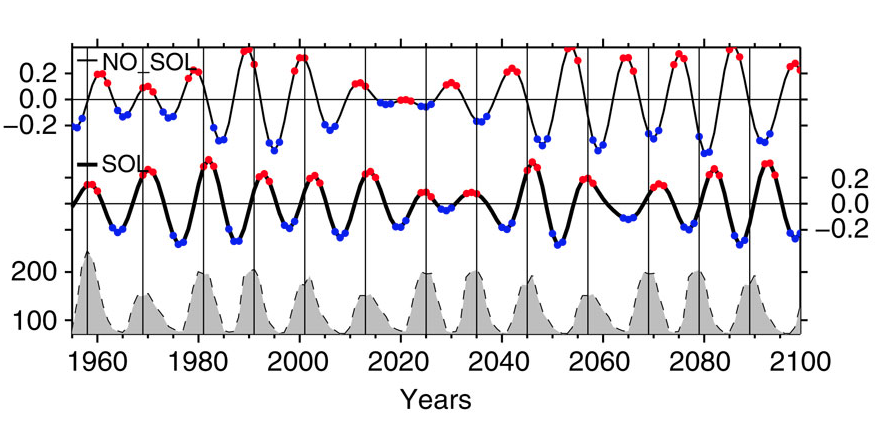- It is already known that the 11-year solar cycle influences the atmospheric circulations especially in the middle atmosphere. However model-experiments show that the atmosphere can also vary in time-scales around the 11-year solar cycle even without solar forcing. This makes the detection and understanding of the solar impact on the observed climate very difficult. Our contribution is to detect and understand such impact and extend the linkage to include variations in the oceans, explains Nour-Eddine Omrani one of the co-authors of the article. He is postdoctor at the Geophysical Institute and Bjerknes Centre.

The international team of scientists led by GEOMAR Helmholtz Centre of Ocean Research Kiel shows in the study how the 11-year solar cycle serves as a phase-lock for the North Atlantic Oscillation (NAO). Their study was recently published in the international journal Nature Communications.
NAO is a climatic phenomenon in the North Atlantic Ocean. It reflects the fluctuations in the strength of the Islandic low and the Azores high, and controls the strength and position of westerlies and storm tracks across the North Atlantic from west to the east. In addition, it has impact on the Ocean and its circulation.
Phased-locked to solar activity
This newly discovered link between solar activity and NAO allows researchers to make more precise measures of climate variability over long periods of time, according to the press release from GEOMAR.
The scientists conducted model experiments over a period of 145 years, and with the simulations they found a consistent time lag between variations of solar activity and large-scale NAO patterns, which is supported by the observational data.
- The long time fluctuation of the NAO is highly correlated to the 11-year solar cycle. Strong NAO-values persist until three years after the solar cycle peaks. This finding can help predict how the NAO may vary in longer time-scales and how to adapt to it, Omrani explains.

Influence on Norway
This large-scale pressure system affects Norwegian weather in the sense that a positive NAO index will give more rain and mild winters in Norway and the rest of northern Europe, while a negative NAO index gives cold and dry winters.
- The significance of our results for the deterministic day-to-day weather forecast is very low, but the result will help estimating the shift of wintertime climate over longer time periods, Omrani continues to explain.
Being able to predict future climate variability will be helpful to industries and activities that are dependent on specific climate conditions. However, Omrani highlights that there are several other factors that contribute to the variations of the North Atlantic Oscillation.
- There is still a long way to go, for successful and reliable long-term forecasts up to a decade. Nevertheless, for successful predictions it is important to include solar fluctuations, concludes the initiator and co-author Professor Katja Matthes in the GEOMAR press release.

